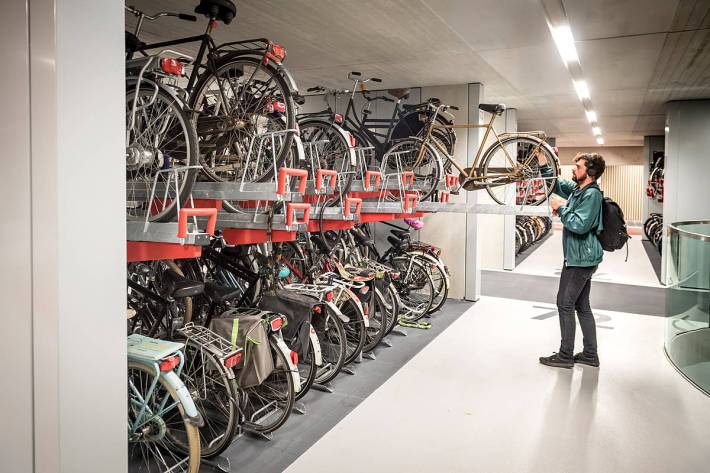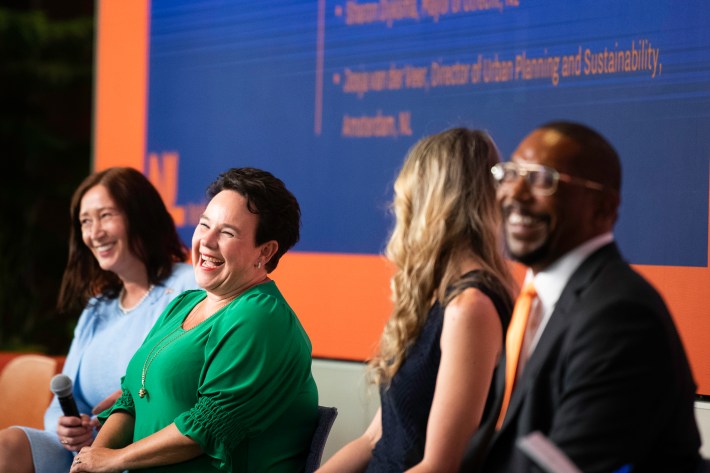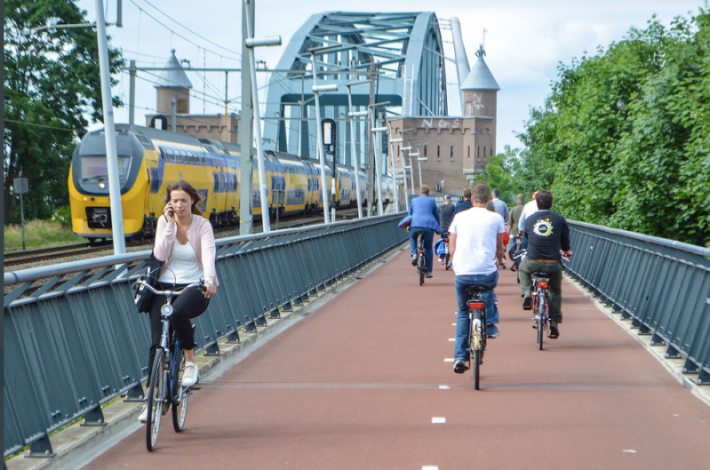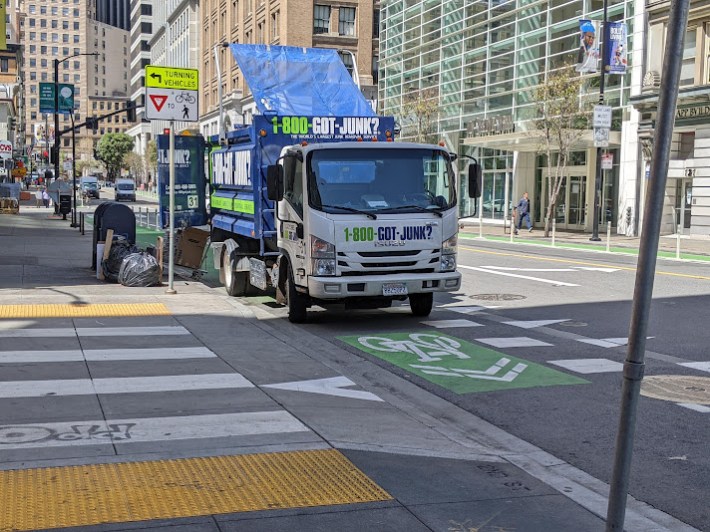Note: GJEL Accident Attorneys regularly sponsors coverage on Streetsblog San Francisco and Streetsblog California. Unless noted in the story, GJEL Accident Attorneys is not consulted for the content or editorial direction of the sponsored content.
"We have to find ways to make different choices," said Utrecht Mayor Sharon Dijksma on the first day of a week-long conference and tour to bring Dutch street design knowledge to San Francisco and other cities of California. She was talking about the choice not to make cars the dominant form of transportation. "We are the cycling capital of the world. It’s not just because we have so many people using the bike, it’s because we have a holistic program of infrastructure."
Utrecht has made its choice, and it puts San Francisco to shame when it comes to cycling rates. In that city of 360,000 people, nearly everyone owns and uses a bike. Roughly a third of all trips are made by bicycle. And it boasts the largest bicycle parking structure in the world, holding over 12,000 bikes, at its central railway station.

That's part of what Dijksma means by "holistic." They don't just build bike lanes. Instead, transit, urban planning, and bike lanes all work together to solve the so-called last-mile problem. But as Dijksma and others on the early panels stressed, it's also about creating public spaces where "cars are guests" and people can be comfortable cycling, walking, and just existing in the space between buildings without constantly looking both ways for traffic. "We can give the public realm back to the people," said Josja van der Veer, director of urban planning and sustainability in Amsterdam. When it comes to planning, "we don't start with the traffic, we start with [creating] the spaces to stay and meet."

But that doesn't mean that Utrecht neglects robust, protected bike lanes, intersections, and separated bike paths, not to mention serious investments in a comprehensive transit system--as seen below in a shot from the Dutch Cycling Embassy. Cycle lanes, trains, and buses aren't seen as "alternative" forms of transportation--they are primary, and Dutch transportation investments reflect that.

The San Francisco guests, meanwhile, explained that the city's regrettable history of prioritizing cars--and neglecting transit--is so ingrained that accommodating motorists remains front and center in almost any planning discussion. This is due to a perceived zero-sum situation. "We should be prioritizing walking, bikes, and transit use, but at the end of the day that will come at the cost of people who need to drive," said Alexandra Sweet, Transportation Advisor, Office of Mayor London Breed. "With some of our communities in need, when we take away their ability to drive we are doing them a disservice."

That puts San Francisco in a position of looking for areas where the city can turn excess automobile capacity--and there's way more of that than many realize--into protected bike lanes. One of those places, explained SFMTA's Tom Maguire, is SoMa, where the streets are super wide and have plenty of room for dedicated bus and bike lanes. "They're traffic sewers," he told the crowd of Dutch and locals during the event. "We found when we dug into the numbers they are wider than they need to be, and we can re-purpose those lanes."

He added that the city was particularly proud of eliminating one of those excess capacity traffic sewers in Golden Gate Park. Now a stretch JFK Drive, renamed the JFK Promenade, is available to everyone instead of existing as a surface-level freeway cut-through. The Promenade can be used by everyone, including "two-legged, four-wheeled, four-legged," he said, referring to a picture that was part of his presentation with kids on scooters and people walking dogs on the Promenade.
The Dutch Cycling Embassy's Chris Bruntlett, who cycled with a group of Dutch visitors through Golden Gate Park on Monday, also reflected on the progress on JFK:
Read the headlines, and you’d think banning cars from 2.5km of San Francisco’s Golden Gate Park was divisive and controversial.
— Melissa & Chris Bruntlett (@modacitylife) September 6, 2022
Visit @JFKPromenade and see the number and diversity of people enjoying this space, and you’d wonder what took so long and what all the fuss was about. pic.twitter.com/EeHFNxXaD3
Maguire added that the transformation of JFK is something he hopes to repeat elsewhere in the city, with the long-term goal of emulating Dutch cities like Utrecht or Amsterdam in reducing car dependence.
"This is our vision for San Francisco," said McGuire.
The conference, which brings together Dutch planners, engineers, and other transportation experts, continues for the rest of the week, in San Jose, Los Angeles, and other locations on the West Coast. Portions are streamed on Twitter.






